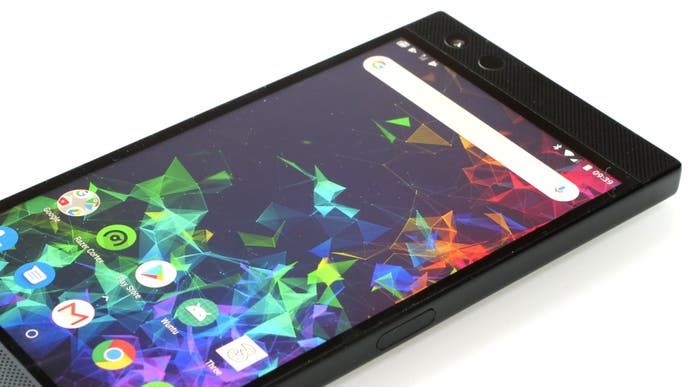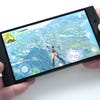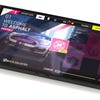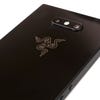Razer Phone 2 review: as smooth as silk
Gaming is slick, but the 120Hz interface is on another level.
Last year, Razer entered the smartphone market with its highly distinctive, gaming and media-focused Razer Phone, combining what was then the fastest Android-optimised processor on the market with a variable refresh rate screen, powerful front-facing speakers and a ginormous 8GB of RAM. It's the phone I use to this day, and for reasons that shall become clear, the recently released Razer Phone 2 is essentially the only upgrade choice I'm considering right now. There are faster, more powerful phones available but Razer's unique mixture of RAM and VRR display looks and feels so good that even the fastest rival flagships I've used seem to fall short.
Perhaps not surprisingly, what I love about the original Razer Phone is fully present and correct in its successor, because the core proposition remains very similar. Pairing a 5.7-inch 1440p 120Hz display with a surfeit of RAM produces its signature smooth operation and lightning-fast response. Yes, the Razer has a focus on gaming, but the big deal for me is that the basics are on another level: you can swap between apps instantly, while swiping and scrolling is so much smoother than the competition. It just feels right. In the last 14 months, I've tested and passed up on the Samsung Galaxy S8, the S9+ (in both Snapdragon 845 and Exynos 9810 variants) and the iPhone XR, though I did find the £220 Honor Play to deliver exceptional value. In many other ways - be it display brightness, form factor or camera quality - both S9+ and the XR outstrip the Razer Phone and indeed the Razer Phone 2, but the quality of the interface - the basic 'handshake' between user and phone - hasn't been surpassed.
Not surprisingly, the Razer Phone 2 offers several improvements over the original. First of all, the Snapdragon 835 processor of the original is swapped out with its 845 successor, with higher CPU and GPU performance. Secondly, the screen is much improved. As much as I enjoy the original's super-smooth refresh, it's simply not bright enough outdoors. The Razer Phone 2 is a big improvement here - it's not up there with the OLEDs, for sure, but its 645 nits peak brightness is enough to make for a big improvement and it also opens the door to viable HDR support. I tested out our YouTube HDR content where I'm very familiar with the source material and how it should present. Dynamic range isn't as wide as a living room display or some of the OLED phones out there, but you do get a convincing enough HDR presentation and it's a sizeable improvement over the original Razer in this regard.
Other enhancements come in the form of Chroma RGB lighting via the Razer logo on the rear (which is paired into notifications, if that's what you want), while the metal casing of the original is replaced with smart-looking glass, giving much more of a premium feel - and crucially, enabling wireless charging. My concern here would be durability - the Razer Phone 2 is one of the largest phones on the market, and over the months I've lost count of the amount of times my original (with much the same dimensions) has fallen out of my pocket, scuffing the metal surface and dinging its corners. A case is a good idea then, but this makes an already large phone even more unwieldy, and inevitably, even more likely to fall out of your pocket.
Razer has worked hard to improve and iterate on its original design though, also adding IP67 dust and water resistance - so there are no worries if you drop the phone into the bath. However, while all of these additions and improvements are welcome, little has been done to improve the mediocre camera of the original (after the display brightness, this is my key gripe with the first-gen Razer). Picture quality is perfectly fine, but merely average compared to the often brilliant results delivered by competing handsets. Video is also disappointing - the original Razer never received the mooted 1080p60 upgrade, and I couldn't believe the lack of 60fps video in the new offering. High-end competitors are now offering 4K60 video capture, and it's disappointing to see the Razer Phone 2 lag so far behind in a truly crucial area of smartphone design.
So, what of the Razer's gaming credentials then? After all, this is the target market for the device. The inclusion of the Snapdragon 845 effectively guarantees that in the Android space at least, you are getting the most performant silicon on the market for now. The same processor is found in the Galaxy S9 and S9+ - but only in the international version. Territories like the UK get Samsung's own Exynos alternative which is fast enough but with weaker GPU power compared to the Snapdragon variant. The Razer backs up the high quality processor with a portal for tweaking settings and optimising performance, which is helpful, and combined with the VRR display, it's safe to call this the best Android gaming phone. My only complaint is that despite improved heat dissipation, the Razer Phone 2 does get rather hot to the touch after prolonged gaming.
| Razer Phone 2 | Razer Phone | Galaxy S9+ (Exynos) | iPhone XR | |
|---|---|---|---|---|
| Geekbench Single-Core | 2414 | 1954 | 3660 | 4795 |
| Geekbench Multi-Core | 8713 | 6719 | 9007 | 11204 |
| GFXBench T-Rex 1080p | 155fps | 120fps | 143fps | 235fps |
| GFXBench Manhattan 3.1.1 1440p | 33.0fps | 24.0fps | 26.4fps | 39.0fps |
| 3DMark Slingshot Extreme Unlimited | 4837 | 3822 | 3380 | 4212 |
Another challenge facing the Razer Phone 2's status as the best gaming handset is that the last couple of generations of iOS devices are simply excellent, state-of-the-art mobile performers. Looking at titles such as Fortnite and Asphalt 9 Legends, the iPhone X delivers equivalent visuals but smoother performance. Part of this advantage is down to the power of Apple's bespoke silicon, but equally, based on our conversations with mobile developers, performance via Apple's Metal API is delivering quantifiably better results than OpenGL or even Vulkan on Android. Meanwhile, the latest iOS devices - XS, XS Max and XR - are delivering those same two titles with 60 frames per second options vs the standard 30fps, and they look fantastic. I also should acknowledge Apple's dedication to the use of high speed storage - games load faster than any Android phone I have tested, including the Razer Phone 2. I admire the quality of Apple's designs, but prefer the choice and diversity offered by Android devices - but if gaming really is important to you, the iOS products are hard to beat.
Personally though, mobile gaming isn't a priority for me - but even so, despite its gaming focus, the Razer Phone 2 is the only upgrade option I'm considering. It's all about that interface which delivers the lowest amount of lag and stutter I've experienced on a smartphone. It may not feel like a big upgrade at first, but once you're acclimatised to an interface this fast and this smooth, it's really difficult to go back to a standard screen. The fluidity of the Razer experience is only really let down by poorly optimised web pages - something that affects all phones - but even the stutter here is minimised by the VRR display. This is the way that smartphone UIs should operate, and despite some progress elsewhere (the latest iOS devices have 120Hz touch processing) it's only the Razer Phone and Razer Phone 2 that deliver this experience. Out of the box, both phones are locked to 90Hz (with 120Hz as an option) and even this delivers that exceptional fluidity and response, which would bring the ASUS ROG phone into contention - though I've not had the opportunity go hands-on with that.
The story with the Razer Phone - and the new Razer Phone 2 - is fascinating. I'm not entirely sure you're getting the best gaming experience in a world where the iOS devices are so powerful, but what's kept me hanging onto my original Razer is the experience with the UI, the apps that run on it, the solid battery life and the fact that it's still as fast as it was the first day I got it. In designing a smartphone aimed at the gamer, Razer has delivered the smoothest operating interface I've used - and that's where you spend most of the time interacting with the device. Sure, I'd prefer a slimmer, bezel-less phone with an OLED screen, but after a year with the Razer Phone and a few weeks with its successor, I'm convinced that Apple, Samsung and others are missing a trick here - a high refresh rate display paired with a ton of RAM makes a big difference to the user experience, and where Razer has innovated, I hope to see others follow. Failing that, how about a Razer Phone Stealth?
The Razer Phone 2 is available to buy direct from Razer, or via Amazon. In the UK, Three has the exclusive on contract deals for this handset.
















